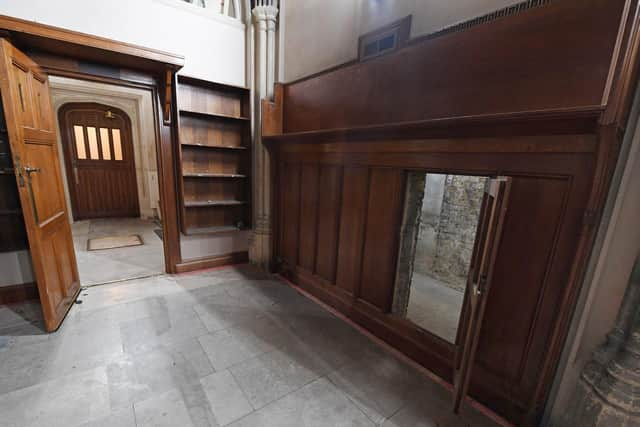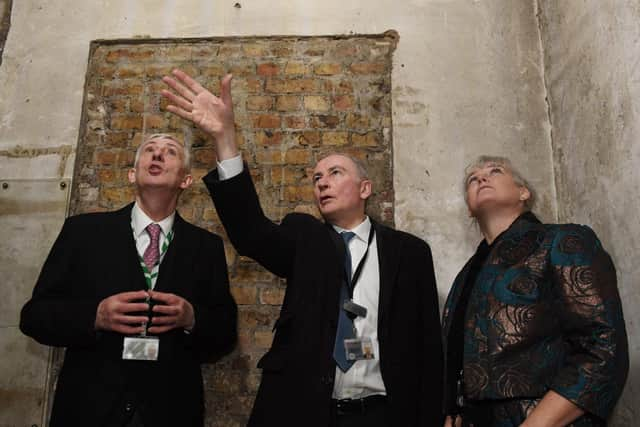Secret 17th-century doorway discovered in Parliament reveals 169-year-old graffiti


Parliament's architecture and heritage team working on the £4 billion renovation of the House of Commons rediscovered the passageway following recent investigative work.
The entrance, thought to have been used by political luminaries such as diarist Samuel Pepys and Robert Walpole, the first de facto prime minister, dates back more than 350 years.
Advertisement
Hide AdAdvertisement
Hide AdCommons Speaker Sir Lindsay Hoyle said: "To think that this walkway has been used by so many important people over the centuries is incredible.


"I am so proud of our staff for making this discovery and I really hope this space is celebrated for what it is - a part of our parliamentary history."
The hidden walkway had originally been established for Charles II's coronation in 1660 to allow guests access to the new king's celebratory banquet.
It was later used by MPs to access the Commons, which was originally in the medieval Palace of Westminster before a fire destroyed much of its structure in the 19th century.
Advertisement
Hide AdAdvertisement
Hide AdOnly Westminster Hall - the oldest part of the palace, where the doorway was found - survived the blaze and was incorporated into Parliament's neo-Gothic rebuild.


For the past 70 years, the entrance had remained forgotten behind wooden panelling in a cloister that was formerly used as offices by the Parliamentary Labour Party, according to Commons authorities.
A brass plate marks where the doorway had been in Westminster Hall, but historians thought it had been filled in during reconstruction work after the palace was bombed during the Second World War.
Graffiti written by bricklayers who helped architect Sir Charles Barry restore the palace following the fire in 1834 was also discovered during the works.
One sentence of the graffiti, dated 1851, reads: "This room was enclosed by Tom Porter who was very fond of Ould Ale."